Tikoy – Nian Gao for Lunar New Year – Instant Pot + Stove-top
As an Amazon Associate and member of other affiliate programs, I earn from qualifying purchases.
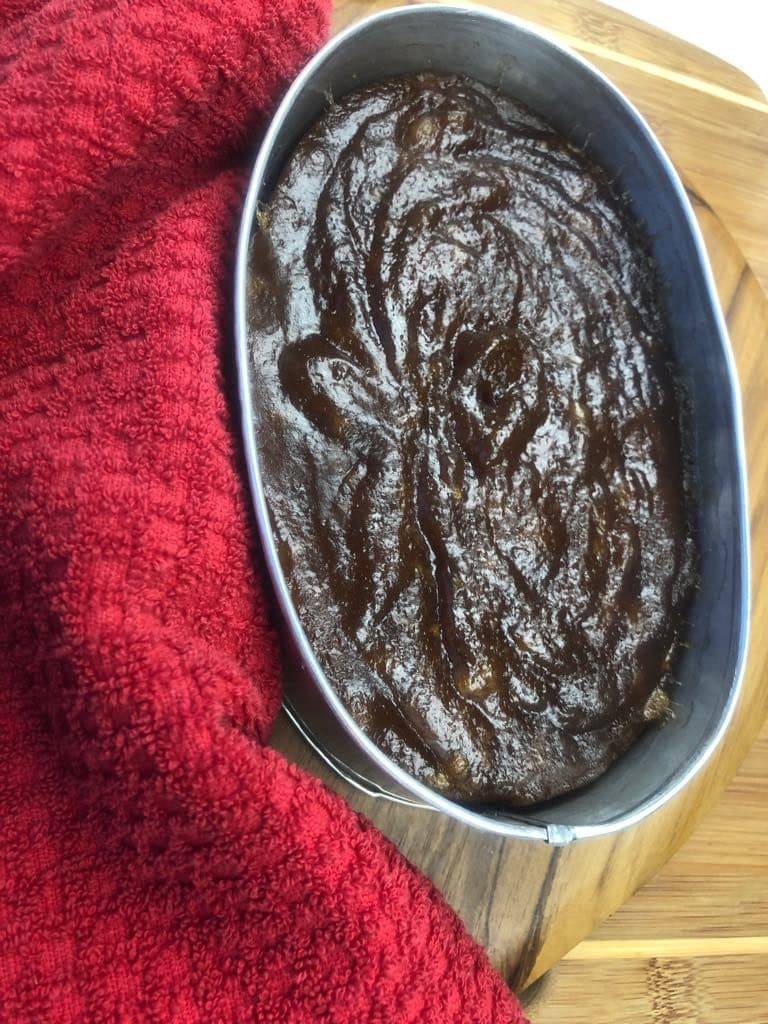
It’s the Lunar New Year in a few days. You still have time to make this Tikoy-Nian Gao a steamed rice cake either in the Instant Pot or on the stove-top. My suki (favorite vendor) ran out of Tikoy (to Filipinos), Nian Gao in Mandarin or Nin Kou in Cantonese for Chinese New Year, and tried to hold one last cake for me. But due to the winter weather I didn’t get to the Asian store.
I found a tikoy recipe and tried it today. I had everything in my pantry — sweet rice flour, brown sugar, vegetable oil. I had an Instant Pot ready to steam it all. If you don’t own an Instant Pot multicooker or the new high pressure cookers, don’t worry. I offer a stove-top traditional way to cook tikoy in the recipe procedure below.
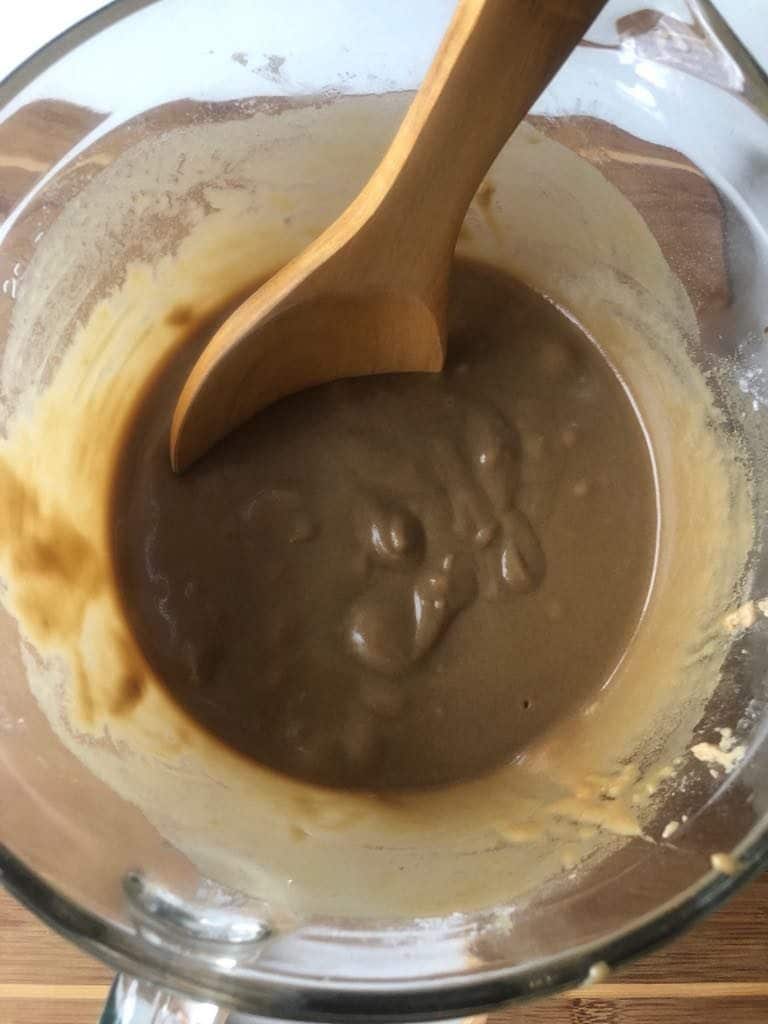
Back in the Philippines, it wasn’t Chinese New Year if we didn’t have tikoy at home. Friends from the Chinese community always gave our family this steamed cake as gifts. The Philippines was strongly influenced by a mix of cultures from neighboring countries. The Chinese influence is strong in all levels.
In my American kitchen, annually, I cook Chinese food to celebrate the Lunar New Year. After I steamed this solid pudding-like rice cake, its sweet. gelatinous texture was exceptional. I kept the steamed tikoy in the refrigerator overnight to firm up. Soon, it will be ready to be sliced and dipped in eggs before pan frying. The yellow in eggs are said to symbolize prosperity, according to our elders, because it’s similar to the gold color of coin currency. We never turn away the chance for prosperity, so cooking tikoy is a must for me.
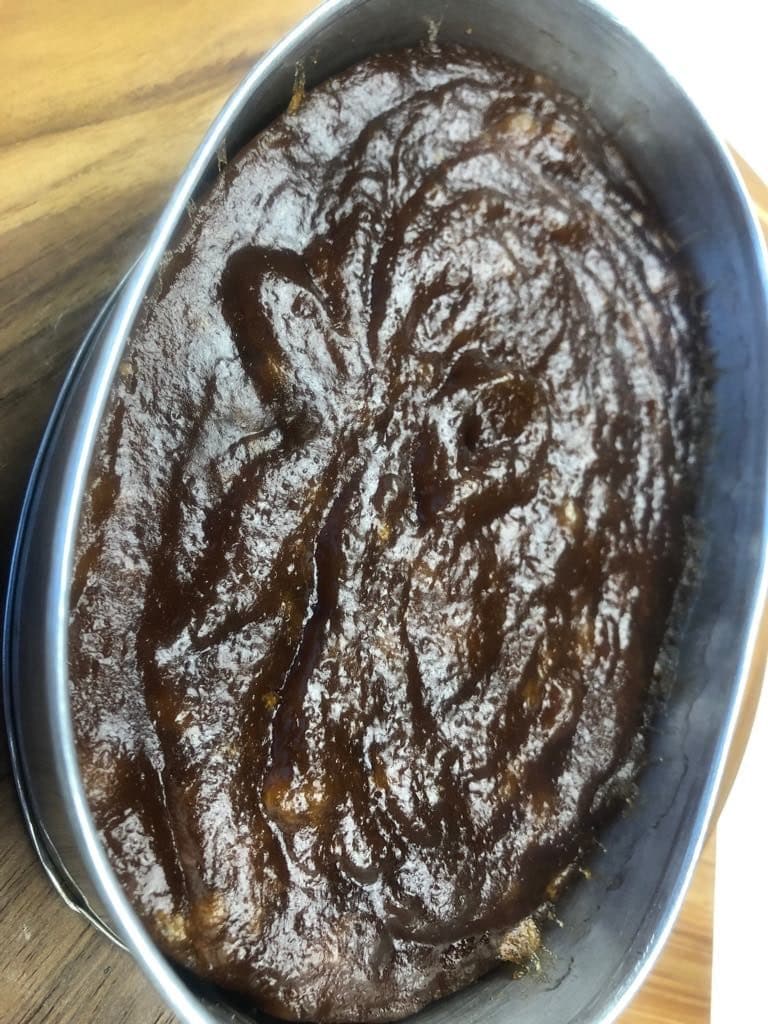
It is interesting to hear what other Asian cultures traditionally cook, too. My niece, Tsui Chern grew up in Singapore, but now lives in California with her husband and daughter. Here’s what she told me about their celebrations:
“ We serve tikoy too, although we pronounce it differently. The word is actually a melding of 2 languages. The Hokkien dialect “ti” means sweet, and the Malay word “kueh” which means cake or pastry. We normally present it to the gods during the 15 days of Chinese New Year. The belief is that during these 15 days, the lesser/demi-gods go up to heaven to report on the mortals’ behavior for the past year. So we mortals try to sweeten what they say with sweet foods, and “tikoy” is one of them.”
Happy Lunar New Year to you, my dear friends.
Gong Xi Fa Cai (in Mandarin).
Gong Hey Fat Choy (in Cantonese).
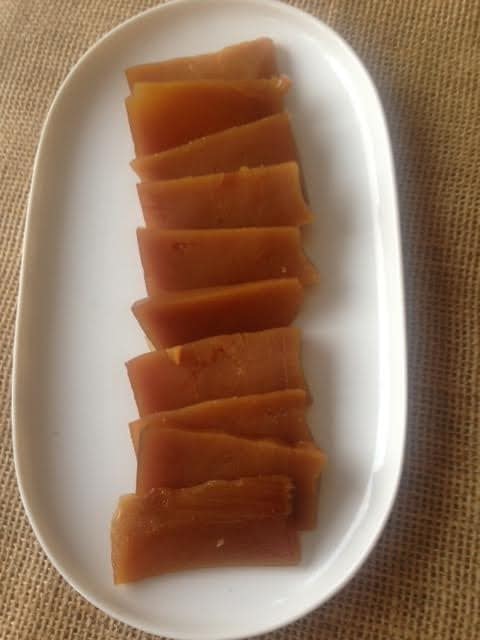
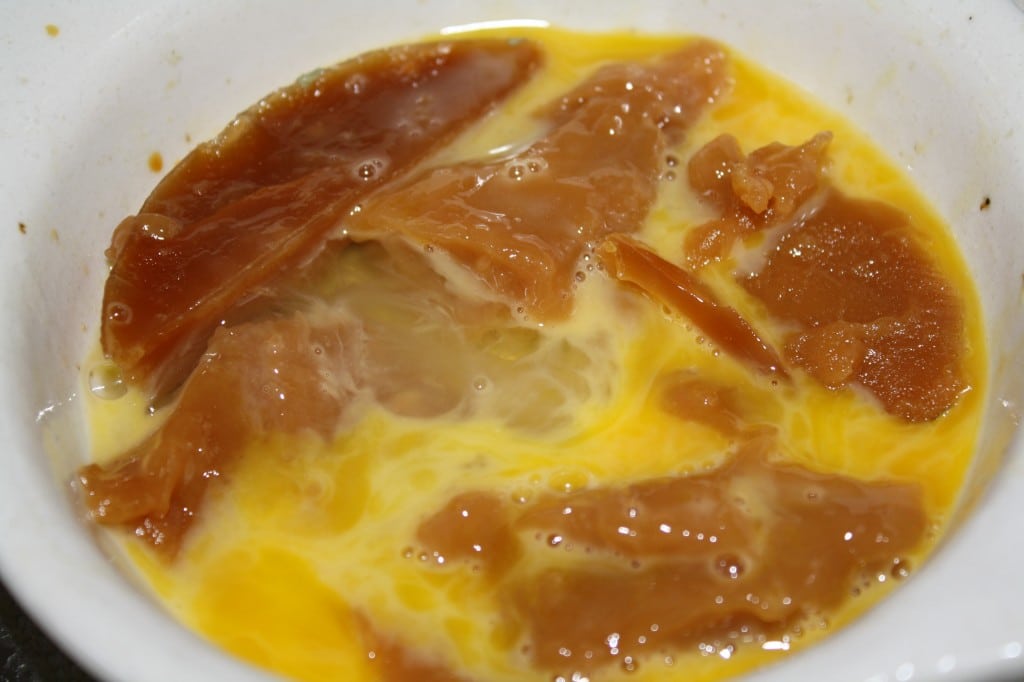
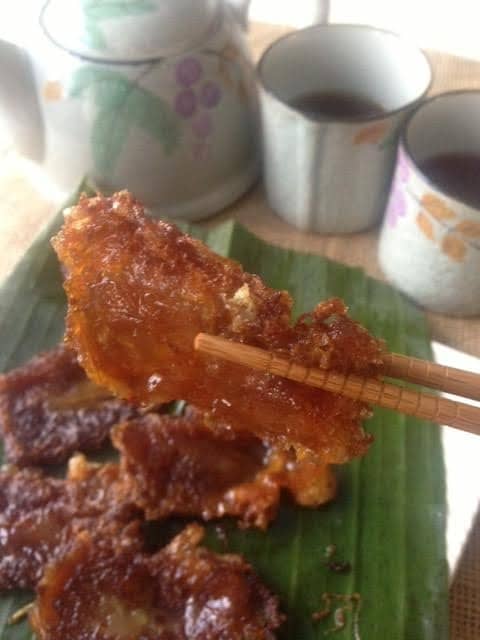
* For more Lunar New Year recipes like Ube Tikoy, Pineapple Tarts, Char Siu Pork, Asian Braised Ribs, Chicken with Chinese Sausages, and more, click here for links.
Tikoy - Nian Gao for Lunar New Year - Instant Pot + Stove-top
Equipment
- Instant Pot multicooker - 6 quarts or 8 quarts.
- Standard steamer - if cooking stove-top
- cake pans that fit inside Instant Pot (7-inches diameter) or inside standard steamer
Ingredients
- 1 cup dark brown sugar
- 1 disc (4 oz) panocha solid sugar cane discs with molasses, from Asian markets
- 1 cup hot water
- 1 box (16 oz/1 lb/454 g) Koda Farms Mochiko Sweet Rice Flour
- 1/2 cup water
- 2 Tablespoons vegetable oil
- 1 teaspoon organic pure vanilla extract
- 1 teaspoon lye water optional
- 2 to 3 whole large eggs whole, for pan-frying
- 1/4 cup vegetable oil for pan-frying
- hot tea for serving
Instructions
- Grease with cooking oil spray 2 Filipino oval llaneras (5-inch length) or one 7-inch metal round baking pan. (Note: Do not use glassware for the Instant Pot). Set these aside.
- Place the panocha (palm sugar disc) together with the cup of hot water in a small stockpot. Over high heat, melt the sugar disc in about 2 minutes. Crush the softened palm sugar disc with a wooden spoon and blend till water turns a caramel color.
- Add the brown sugar to the water with the melted panocha in the stockpot. Stir and melt the brown sugar. It takes about 2 to 3 minutes over high heat for the brown sugar to melt and start bubbling. Remove from fire and set aside.
- In a large mixing bowl: Mix together the Mochiko sweet rice flour, melted sugars, 1/2 cup water, vegetable oil, vanilla and lye. Blend by hand with a large spoon till smooth. Or to hasten the mixing, process in a food processor till silky smooth.
- Pour the mixture in pre-greased containers.
- To cook in the Instant Pot:
- Place one llanera or the round cake pan on top of the steamer trivet (that comes with the Instant Pot). Pour 3 to 4 cups water on the sides of the inside pot, reaching the bottom of the cake pan.
- Close and lock the lid. Set the valve to Sealing.
- Press Manual + Steam and cook for 45 minutes.
- When Instant Pot buzzer sounds to announce cooking is complete, carefully do a Quick Release of the valve. Open the lid slowly and put aside.
- Use silicone oven mitts to remove the cake pan. Cool the tikoy on the counter.
- Note: I own a 6-quart Instant Pot Duo which can cook one (1) oval llanera at a time or else one (1) 7-inch round cake metal or silicone pan that fits in the inside pot.
- To cook stove-top:
- Pour the mixture into 2 Filipino llaneras or a round metal cake pan that fits the traditional steamer on your stove.
- Fill 3/4 full of water the bottom layer of the steamer. Place the second layer of the steamer (pan with holes) that contains the tikoy over the bottom layer filled with boiling water.
- Cover and steam for 1 hour and 45 minutes. (Note: Cover the bottom of the lid with a large cheese cloth or kitchen towel so that droplets do not fall on the tikoy mixture).
- Test to see if steamed tikoy is done by piercing the center with the tip of a sharp knife. When tikoy is firm, then it is done. Remove from steamer. Cool on counter.
- To store before cooking:
- When tikoy has cooled, cover with plastic wrap and foil. Seal well. Refrigerate 6 hours or overnight to firm up. (Note: Steamed tikoy keeps in the refrigerator for 3 to 4 weeks).
- To pan fry tikoy for good luck: When tikoy is firm enough, slice into bite-sized rectangles or squares about 2-inches each. Dip each slice into a small bowl of beaten eggs. In a large skillet, over medium high heat, add the vegetable oil. When oil is hot enough in about 2 to 3 minutes, add the pre-soaked tikoy slices. Pan fry each side for 1 to 2 minutes. Drain fried slices on parchment paper to remove excess oil. Arrange fried slices on a serving platter. Serve warm with piping-hot tea.
- Cook's comments: Lye water is also known as lihiya to Filipinos. It is liquid sodium hydroxide, an alkaline substance used in cooking to improve texture and color. I use this for making Kuchinta, a Filipino brown sugar rice cake. Panocha are round discs which are raw sugarcane cakes. They are reddish-brown in color, made with boiled molasses and molded into a round, solid disc that looks like a coconut shell. The lye, panocha and Filipino llaneras (oval tin containers) are sold at Asian markets or online sources like Amazon.com.
- Copyright Notice:Hello, Friends! Please DO NOT LIFT OR PLAGIARIZE my original recipe. All the images and content on this blog are COPYRIGHT PROTECTED and owned by my media company Besa-Quirino LLC. This means BY LAW you are NOT allowed to copy, scrape, lift, frame, plagiarize or use my photos and recipe content I wrote, on your website,books, films, television shows or videos without my permission. If you want to republish this recipe or content on another website, video, news article,or media outlets mentioned above please ASK my permission, re-write it in your own words and simply link back to this blog to give proper attribution. It’s the legal thing to do. Thank you. Email me at [email protected]
Nutrition
Nutrition Notes: The nutrition information provided is an estimate and will vary based on brands of ingredients and cooking methods.
Copyright Notice: Hello, Friends! Please DO NOT LIFT OR PLAGIARIZE my original recipe, stories, photos or videos. All the images and content on this blog are COPYRIGHT PROTECTED and owned by my media company Besa-Quirino LLC. This means BY LAW you are NOT allowed to copy, scrape, lift, frame, plagiarize or use my photos, essays, stories and recipe content on your websites, books, films, television shows, videos, without my permission. If you wish to republish this recipe or content on media outlets mentioned above, please ASK MY PERMISSION, or re-write it in your own words and link back to my blog AsianInAmericaMag.com to give proper attribution. It is the legal thing to do. Thank you. Email me at [email protected]

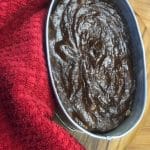
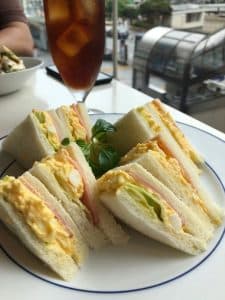


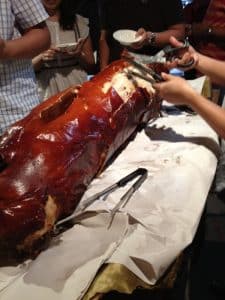
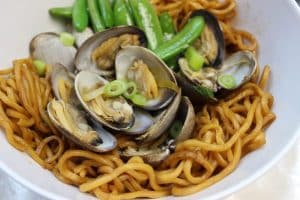

5 Comments